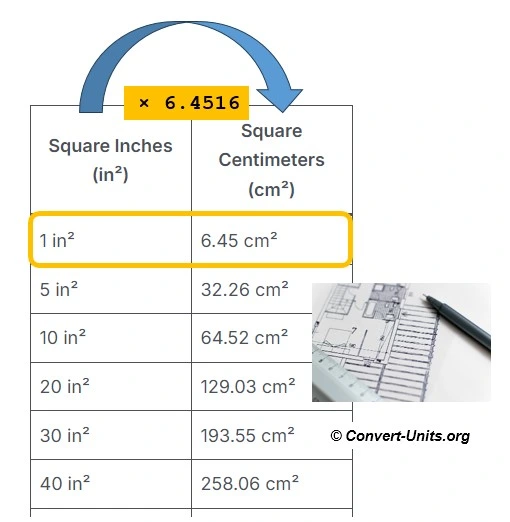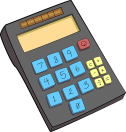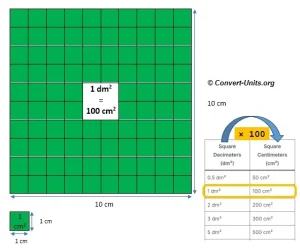
in² to cm² Conversion Calculator
Click on the following link if you want to convert square centimeters to square inches – cm² to in²
History
The inch is an old English unit that dates back to the early Middle Ages. Originally, it was defined as the width of a man’s thumb or three grains of barley placed side by side.
With the rise of the Imperial system, the inch became standardized as exactly 2.54 centimeters.
Since we’re converting areas, that relationship must be squared:
1 in² = (2.54 cm)² = 6.4516 cm².
For more on measurement standards, see NIST’s official SI units page
Common Usage
- Square inches (in²) are common in the U.S. and U.K. for small surface areas such as screens, tiles, and blueprints.
- Square centimeters (cm²) are used in metric countries for the same types of measurements — everything from smartphone dimensions to fabric pieces.
For example, a 6-inch by 4-inch photo has an area of 24 in², which equals about 155 cm².
Conversion Formula
Since 1 in² = 6.4516 cm², the formula is:
cm² = in² × 6.4516
Example:
Convert 10 in² to square centimeters.
10 × 6.4516 = 64.516 cm²
So, 10 square inches equal 64.52 square centimeters.
Conversion Table
| Square Inches (in²) | Square Centimeters (cm²) |
|---|---|
| 1 in² | 6.45 cm² |
| 5 in² | 32.26 cm² |
| 10 in² | 64.52 cm² |
| 20 in² | 129.03 cm² |
| 30 in² | 193.55 cm² |
| 40 in² | 258.06 cm² |
| 50 in² | 322.58 cm² |
| 100 in² | 645.16 cm² |
| 200 in² | 1,290.32 cm² |
| 500 in² | 3,225.80 cm² |
Interesting Facts
- The inch was officially defined as 2.54 cm in 1959 by international agreement between English-speaking countries.
- Many computer screen sizes are measured in inches, but their resolution or pixel density is often calculated in cm² or mm².
- The U.S. building industry still uses in² for blueprints, while the rest of the world uses cm² or m².
Frequently Asked Questions
1. How many square centimeters are in one square inch?
6.4516 cm².
2. How do I convert in² to cm² quickly?
Multiply by 6.45 for an easy mental estimate.
3. Where is this conversion useful?
In printing, interior design, screen sizes, and manufacturing.
4. Why is it squared and not linear?
Because we are measuring area, which involves both width and height.
5. Can I use this for square feet too?
Yes, but square feet require multiplying by 929.03 cm² instead.



